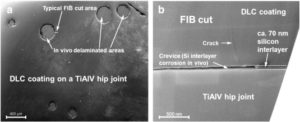Posts Tagged ‘break microcontroller encrypted content’
 Break Microcontroller Samsung S3F9454 Software
Break Microcontroller Samsung S3F9454 Software
Break Microcontroller Samsung S3F9454 locked memory and extract MCU S3F9454 software from flash memory, the program will be cloned from Microprocessor through universal programmer, an adaptive socket will be required for the whole process;

Break Microcontroller Samsung S3F9454 locked memory and extract MCU S3F9454 software from flash memory, the program will be cloned from Microprocessor through universal programmer, an adaptive socket will be required for the whole process
The SAM88RCRI instruction set is designed to support the large register file. It includes a full complement of 8-bit arithmetic and logic operations. There are 41 instructions. No special I/O instructions are necessary because I/O control and data registers are mapped directly into the register file. Flexible instructions for bit addressing, rotate, and shift operations complete the powerful data manipulation capabilities of the SAM88RCRI instruction set when break Microcontroller.
To access an individual register, an 8-bit address in the range 0-255 or the 4-bit address of a working register is specified. Paired registers can be used to construct 13-bit program memory or data memory addresses. For detailed information about register addressing, please refer to Chapter 2, “Address Spaces”.
ADDRESSING MODES
There are six addressing modes: Register (R), Indirect Register (IR), Indexed (X), Direct (DA), Relative (RA), and Immediate (IM). For detailed descriptions of these addressing modes, please refer to Chapter 3, “Addressing Modes”.
FLAG DESCRIPTIONS
33Overflow Flag (FLAGS.4, V)
The V flag is set to “1″ when the result of a two’s-complement operation is greater than + 127 or less than – 128.
It is also cleared to “0″ following logic operations.
Sign Flag (FLAGS.5, S)
Following arithmetic, logic, rotate, or shift operations, the sign bit identifies the state of the MSB of the result. A logic zero indicates a positive number and a logic one indicates a negative number.
Zero Flag (FLAGS.6, Z)
For arithmetic and logic operations, the Z flag is set to “1″ if the result of the operation is zero. For operations that test register bits, and for shift and rotate operations, the Z flag is set to “1″ if the result is logic zero.
Carry Flag (FLAGS.7, C)
The C flag is set to “1″ if the result from an arithmetic operation generates a carry-out from or a borrow to the bit 7 position (MSB). After rotate and shift operations, it contains the last value shifted out of the specified register. Program instructions can set, clear, or complement the carry flag.
 Break Microcontroller ATtiny24 Code
Break Microcontroller ATtiny24 Code
Break Microcontroller ATtiny24 is a process to unlock mcu attiny24’s fuse bit and then extract code from microprocessor attiny24 flash and eeprom memory for MCU cloning;

Features
High Performance, Low Power AVR® 8-Bit Microcontroller
Advanced RISC Architecture
– 120 Powerful Instructions – Most Single Clock Cycle Execution
– 32 x 8 General Purpose Working Registers
– Fully StatMicrocontroller Operation
Non-volatile Program and Data Memories
– 2/4/8K Byte of In-System Programmable Program Memory Flash (ATtiny24/44/84)
Endurance: 10,000 Write/Erase Cycles
– 128/256/512 Bytes In-System Programmable EEPROM (ATtiny24/44/84)
Endurance: 100,000 Write/Erase Cycles
– 128/256/512 Bytes Internal SRAM (ATtiny24/44/84)
– Programming Lock for Self-Programming Flash Program and EEPROM Data Security before decrypt ic flash memory
Peripheral Features
– Two Timer/Counters, 8- and 16-bit counters with two PWM Channels on both
– 10-bit ADC
8 single-ended channels
12 differential ADC channel pairs with programmable gain (1x, 20x) Temperature Measurement
– Programmable Watchdog Timer with Separate On-chip Oscillator
– On-chip Analog Comparator
– Universal Serial Interface
Special MMicrocontrollerrocontroller Features
– debugWIRE On-chip Debug System
– In-System Programmable via SPI Port
– External and Internal Interrupt Sources
– Pin Change Interrupt on 12 pins
– Low Power Idle, ADC Noise Reduction, Standby and Power-down Modes
– Enhanced Power-on Reset Circuit
– Programmable Brown-out Detection Circuit
– Internal Calibrated Oscillator
– On-chip Temperature Sensor I/O and Packages
– 14-pin SOMICROCONTROLLER, PDIP and 20-pin QFN/MLF: Twelve Programmable I/O Lines
Operating Voltage:
– 1.8 – 5.5V for ATtiny24V/44V/84V
– 2.7 – 5.5V for ATtiny24/44/84
Speed Grade
– ATtiny24V/44V/84V: 0 – 4 MHz @ 1.8 – 5.5V, 0 – 10 MHz @ 2.7 – 5.5V
– ATtiny24/44/84: 0 – 10 MHz @ 2.7 – 5.5V, 0 – 20 MHz @ 4.5 – 5.5V
Industrial Temperature Range
Low Power Consumption
Preliminary Summary
– Active Mode:
1 MHz, 1.8V: 380 µA
– Power-down Mode:
1.8V: 100 nA
The ATtiny24/44/84 is a low-power CMOS 8-bit Microcontroller based on the AVR enhanced RISC architecture. By executing powerful instructions in a single clock cycle, the ATtiny24/44/84 achieves throughputs approaching 1 MIPS per MHz allowing the system designer to optimize power consumption versus processing speed when Break MICROCONTROLLER.